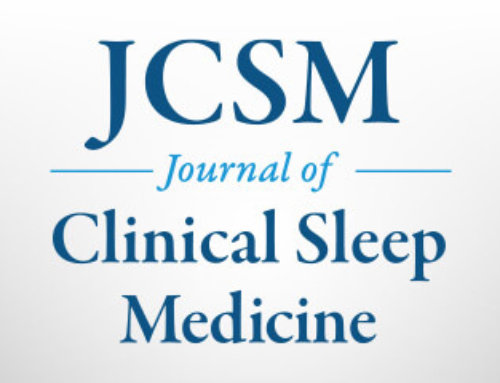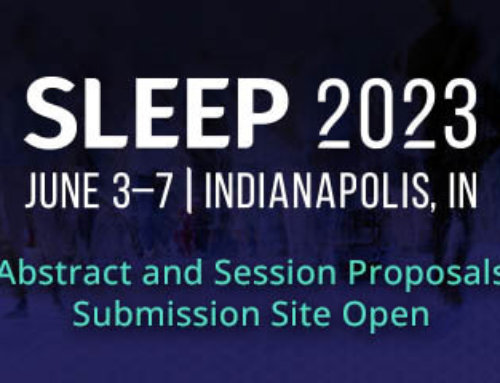Below is a transcript of the talk delivered by Dr. Patrick J. Strollo, president of the American Academy of Sleep Medicine:
As your new President, my primary responsibilities are to serve as a representative for the more than 8,400 members of the American Academy of Sleep Medicine within the medical and scientific communities and to promote our professional interests.
These responsibilities are certainly challenging as the Academy and the sleep medicine field continue to face complex professional challenges that have implications for our clinical practice and research initiatives.
With the passage health care reform legislation earlier this year and the continued integration of new technology into our daily practice, the landscape of clinical medicine will evolve in the coming years. It is impossible to predict fully the effect that legislative reform and technological advances will have on sleep medicine, but we have made strides to anticipate these changes, understand what these changes mean for our members, and address them accordingly. To this end, I will continue to work closely with the Presidential Task Force on the Future of Sleep Medicine and with the Practice Development and Advisory Council created under Dr. Kushida’s leadership. The perspective offered by these expert groups will be valuable as we consider our future directions as an organization. Additionally, our Board will continue to support the critical work of our Coding and Compliance Committee. I also emphasize the importance of the task forces that are updating our practice guidelines for portable monitoring, conducting a technology assessment for our field, and making necessary changes to the scoring manual. The work of these task forces will be critical our field, and I look forward to working with them.
Recognizing the unknowns and challenges ahead, I would like to briefly outline my priorities for this year.
In its relatively young life, the Academy has done a remarkable job promoting sleep medicine health care through education, advocacy and professional standards. During my tenure, one of my goals is to ensure we represent research adequately.
As a physician scientist, I have benefitted greatly from resources for professional development and support provided by the Academy, and I would like to expand on this concept.
As you learned earlier from Dr. Bruce, the Academy, in conjunction with the American Sleep Medicine Foundation, provides critical grant support at a time where funding is limited.
As we maintain a strong commitment to sleep research at an organization level, the Academy is taking steps to address the paucity of funding for sleep-related research at a national and governmental level.
Recently, Dr. Kushida and I, along with leadership from the Sleep Research Society, met with representatives from the National Heart, Lung, and Blood Institute and National Center on Sleep Disorders Research to express our interest in working collaboratively to promote sleep research. Additionally, our health policy staff has met with several members of Congress to emphasize the need for ongoing support of National Institutes of Health funding; highlight the important findings that have resulted from recent sleep-related studies funded by NHLBI; and stress that the Academy and its members are at the forefront of the rapidly growing fields of sleep medicine and sleep research. This level of outreach to federal agencies and our government is important as we advocate for increased support, and I intend to further foster our relationships with the Sleep Research Society, NIH, NHLBI and our legislators.
The cost of care for people with chronic diseases accounts for more than 75 percent of the nation’s 2 trillion dollar medical care costs. It is inevitable that we must look at the resources and opportunities available for our members as medicine moves toward comprehensive care and chronic disease management models that are designed to enhance our efficiency in diagnosing and treating patients. With this shift in care models, patient registries will be an integral tool for the Academy.
A patient registry specific to sleep will help us understand the prevalence of chronic and co-morbid diseases in our patients and gauge the effectiveness of specific medical treatments by tracking the outcomes of these therapies to support treatment decisions. The data from a registry can also aid in our initiatives, as longitudinal records of patient encounters can provide unprecedented opportunities for research. Moreover, patient registries can play an important role as we continue to build the foundation for evidence-based medical practice, and we continue to provide data helpful to payers who need this type of information for coverage decisions.
Registries also provide a basis for Maintenance of Certification, which embraces a philosophical premise that there are several essential competencies involved in delivering quality care that extend beyond medical knowledge, and these competencies should be developed throughout one’s career. Several important and varied resources for our members can be developed from a sleep registry, and a subcommittee of the Board of Directors is currently evaluating the options available to us.
Lastly, there is now a significant and robust literature base on sleep and sleep disorders, and the evidence from these studies has contributed to our knowledge and understanding of this field. However, there are challenges present in clinical research that affect researchers in sleep, namely how to collect data in an efficient timeframe, how to collaborate on the collection on this data, and how to report findings. As an organization, we must consider a model for translational research, and examine ways to leverage our resources to address topical areas of critical importance to our field. I look forward to working with the Foundation’s President, Steve Shea, and the Research Committee on strategies to integrate translational research into our agenda.
Certainly, there are many interesting challenges and opportunities ahead of us. However, we are confident in our future directions as the Academy continues to be served by and engaged Board of Directors and talented and a dedicated staff. I look forward to helping to shape the direction of our clinical and research endeavors and to help guide the future of our field.








